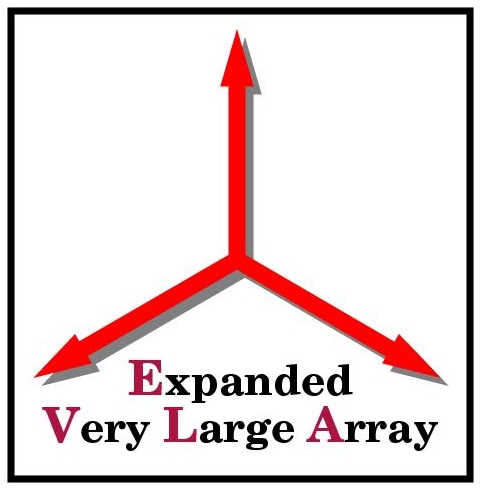[an error occurred while processing this directive]
Questions for the Scientific Working Groups
These are the basic questions we hope to address during this workshop.
Even if you cannot attend, we would greatly value your
input! The best forum for a discussion is the
EVLA planning
discussion group. If you prefer to send in a few quiet notes on
what you feel the most interesting science is, or what we should be doing
technically, you are more than welcome to e-mail Michael Rupen
(mrupen@nrao.edu) or
Rick Perley
(rperley@nrao.edu)
directly.
-
- I. The New Mexico Array (A+ Configuration)
-
- A. What are the key science drivers for the NMA?
-
- B. Should we build the NMA?
-
- C. Within the scope of this project, is the baseline plan of 8 new
antennas plus PT/LA about right?
-
- D. What is the required maximum frequency?
-
- D2. Would you be willing to trade frequncy coverage for
collecting area?
(freq. coverage here refers to max. freq., not
bandwidth)
-
- E. How important is "stand-alone" NMA operation? I.e., should we
ensure good sensitivity & imaging capability (and what is "good") when
the NMA is operating independently of the VLA/VLBA?
-
- F. What field-of-view is required for the NMA? (as a function of
frequency)
-
- G. Rank the relative importance of:
- getting the NMA done as soon as possible ==> using traditional
antenna technology (25m dishes)
- developing new technology specifically for the EVLA-II, to
increase its capabilities (e.g., to give more collecting area)
- developing new technology related to SKA, even if this is not
optimal for the EVLA itself (i.e., think of the EVLA as a working
scientific array built on the way to SKA)
-
-
-
- II. Integrating the VLBA with the (E)VLA
-
- A. How far should we go in integrating the VLBA with the VLA, as
part of EVLA-II?
-
-
-
- III. The E Configuration
-
- A. What are the key science drivers for the E configuration?
-
- B. Should we build the E configuration?
-
- B2. If we build the E configuration, which approach seems most
appropriate:
- 500m max spacing: ~ 9 new pads, cheap
- 300m max spacing: ~15 new pads, matches configuration sequence
- 200m max spacing: ~27 new pads, as dense as we can get
- other
-
- C. How important is shadowing (i.e., observing low declinations)?
-
- D. What frequency range is required?
-
-
-
- IV. Low Frequency Expansion (300-1000 MHz)
-
- A. What are the key science drivers for low frequencies on the
EVLA?
-
- B. Should we provide this improved low frequency (300-1000 MHz)
capability?
-
- C. What frequencies must be covered?
-
-
-
- V. Connections to Other Initiatives: how does the EVLA
fit in with other major astronomical facilities coming on-line over the
next decade(s)?
-
- A. What should be the plan for radio astronomy in the next several
decades, and how does the EVLA fit into that plan?
-
- B. How should the EVLA relate to LOFAR?
-
- C. How should the EVLA relate to the SKA?
-
[an error occurred while processing this directive]



